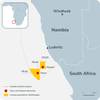A new set of standards for the design and operation of tidal turbines has been published based on the outputs of a project in the Energy Technologies Institute’s (ETI) marine technology program.
The new certification standards will apply to all underwater tidal turbines and will benefit developers, investors, insurers and regulatory authorities.
Essential data for the new standards came from the ETI’s ReDAPT (Reliable Data Acquisition Platform for Tidal) project, using GE’s innovative 1MW buoyant tidal generator which was successfully deployed and tested at the European Marine Energy Centre (EMEC) in Orkney.
With an ETI investment of £12.6m, the project was delivered by a consortium of GE Renewable Energy, E.ON, EDF, DNV GL, Plymouth Marine Laboratory (PML), EMEC and the University of Edinburgh.
The new service specification provides a clear scope for type certification which is key to opening up commercial opportunities when moving from initial prototypes to volume production for tidal turbine developers.
The standard applies to tidal turbines that are fixed to the seabed or floating and covers the structures, machinery, safety, controls and instrumentation and electrical systems.
ETI Project Manager, Marine Paul Trinick said:
“Although the tidal industry is still in its infancy it is evolving all the time and the new standards mean that there is a set of certification guidelines now in place. The work on our ReDAPT project has helped accelerate publication and will help to manage and reduce risk for developers and investors.
“The commercial impacts on developers become greater as the size of turbines and scale of planned arrays increases.
“Project developers will be interested in certifying their projects to satisfy their investors and insurers that they have controlled their risks.
Paul Chesman, GE Renewable Energy ReDAPT project manager said:
“The close cooperation with DNV GL during the ReDAPT project allowed the team to take the tidal industry standards forward and the results will benefit the entire sector. As the coordinator of the project, we are proud of the success of the ReDAPT program and thank DNV GL and all the partners for their contribution.”
Claudio Bittencourt, Business Development Director for wave and tidal in DNV GL said:
“The need for a standard to manage risk and support commercialization was identified in the very early stages of the tidal turbine industry development. Through the foresight of the ETI and their commitment to support this through the ReDAPT project DNV GL was able to rapidly develop a tidal turbine service specification and standard built on a solid technical foundation.”
The ReDAPT project generated over 1.2GWhr of electricity in testing, achieved through months of continuous operation in a real tidal environment demonstrating that devices can be successfully deployed and retrieved in challenging marine conditions.



